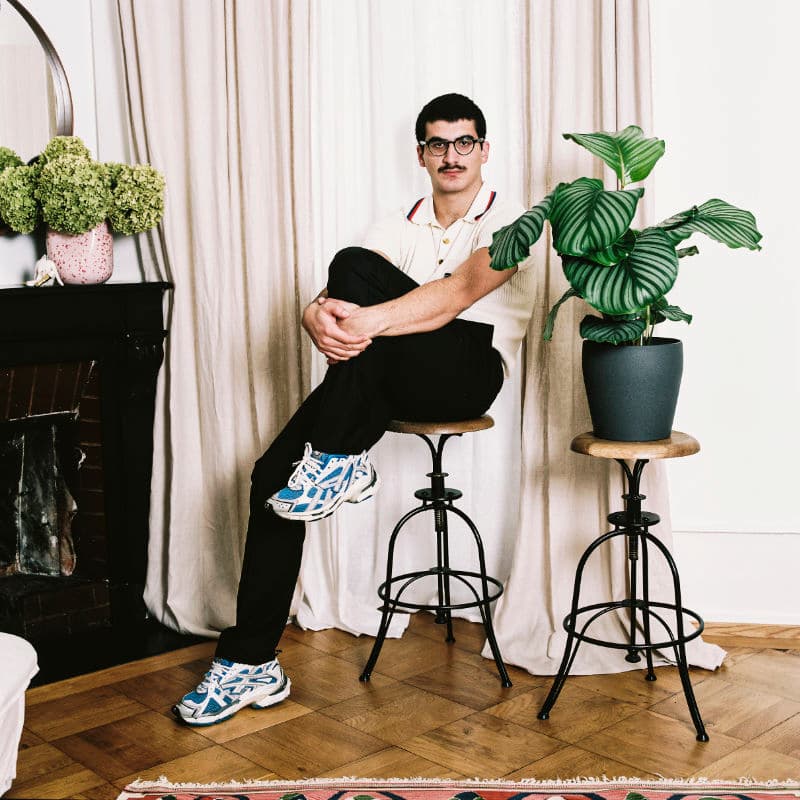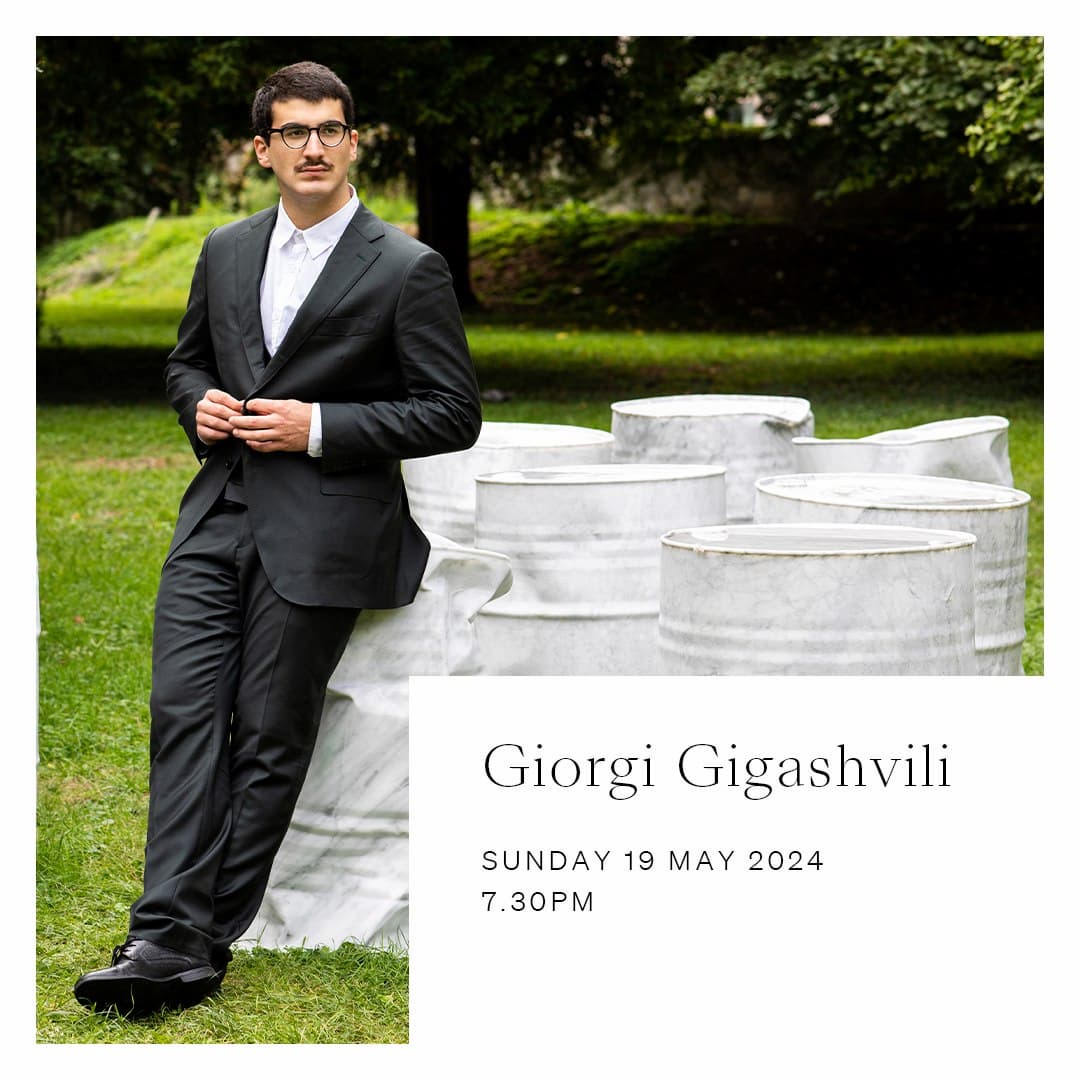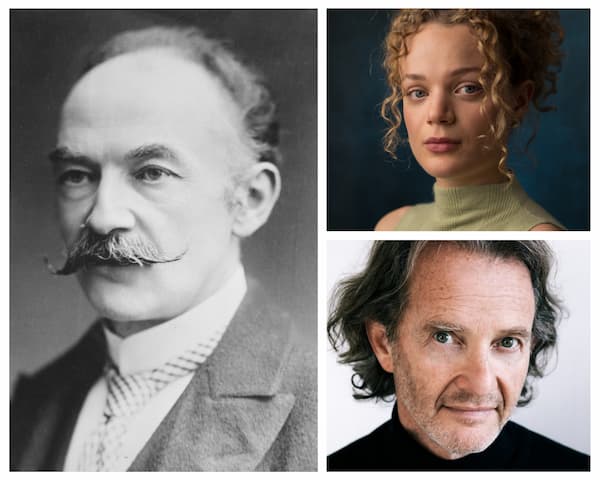Giorgi Gigashvili – 17th Arthur Rubinstein Competition
Giorgi Gigashvili made his name by capturing the second prize at the Rubinstein Competition in 2023, where he also garnered his audience with his daring interpretations and commanding stage presence. I’ve been observing him since the competition as one of the worthy winners – his debut at the Wigmore Hall proved somewhat underwhelming, nevertheless.
His approach to Scarlatti’s Sonata in C major, K.487 was reminiscent of Ivo Pogorelich’s idiosyncrasies – marked by radical tempo shifts, ultra-crisp articulation and liberal use of rubato. Probably not how it was played in Scarlatti’s time, but it imbued the work with a Spanish flavour and energy seldom heard elsewhere.
Domenico Scarlatti: Keyboard Sonata in C Major, K.487/L.205/P.421 (Giorgi Gigashvili, piano)

Giorgi Gigashvili © Kelly de Geer/Classeek
Chopin’s oft-played Ballade No.4 in F minor started off with enticing tonal colours and exquisitely crafted phrases, despite a tendency to pull more than push in the use of rubato. The intricate contrapuntal texture of this Ballade was generally evident. Still, a more discreet build-up towards the climaxes was needed to fully realise its dramatic intent, while passages at loud volumes called for more tonal control. What irked me was how he sustained the pedal through the rest in bar 202 (to be exact) – the stark contrast between the fff chords, absolute silence, and the pp chordal section before the final apocalypse was completely lost! The subsequent Sonata in D major, K.29 by Scarlatti was treated in a similar way as the C major.
Contemplations on the infancy of Jesus, Messiaen’s Vingt Regards sur l’enfant-Jésus marries theological fascination with complex piano writing and a vast emotional landscape. Gigashvili’s reading of Le baiser de l’Enfant-Jésus (The Kiss of the Infant Jesus) from the set was a tour de force, conjuring a kaleidoscope of colours seemingly visual (one could almost see blazing white and shimmering lights even without synaesthesia), and moments that touched the sublime, from the initial meditation to cosmic proportions.
Olivier Messiaen: Vingt Regards sur l’enfant-Jésus – Le baiser de l’Enfant-Jésus (Giorgi Gigashvili, piano)

© Wigmore Hall
Containing French hues that echo the previous work, Scriabin’s Valse had a unique fragrance and crystalline nature with the chiaroscuro in this tilting “dance” partly captured under his hands. But again, finer tonal control was warranted during the impassioned outbursts – when I listened to another pianist the next day from the same seat, the instrument was indeed capable of producing colossal sonorities without sounding harsh.
Sarcastic and biting, Gigashvili’s Shostakovich’s Piano Sonata No.2 in B minor, Op. 61 showcased dazzling passagework and an aptly sardonic parade in the first movement. The lamenting second movement (this Sonata was written in memory of Leonid Nikolayev, Shostakovich’s teacher) and the final movement, in the form of variations, would have benefitted from greater cohesion and narrative power to convey the piece’s inner desolation.
Met with enthusiastic applause, Gigashvili gave a truly precipitato reading of Precipitato from Prokofiev’s Piano Sonata No. 7, highlighting some unexpected inner voices. Unfortunately, on the last page, he fell into the trap of compromising clarity for speed and volume – Sokolov had shown that it’s possible to have them all.
There’s no doubt Gigashvili has immense potential with his originality – the question is, really, how to transmit these musical ideas with tighter control over their execution.
For more of the best in classical music, sign up for our E-Newsletter

